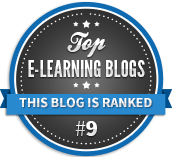Beyond Week One: How Onboarding in Phases Supports Employee Growth Over Time
Key takeaways:
|
For many organizations, onboarding is a fast-paced process crammed into a new hire’s first week. While an initial intensive approach may seem efficient, it often results in information overload, diminished retention, and an underwhelming employee experience. L&D and HR professionals play a critical role in designing onboarding programs that not only introduce employees to company policies, culture, and expectations, but also support their learning and growth beyond the first few days. To create an effective continuous onboarding experience, training should be structured in phases, ensuring that new hires receive ongoing support and development throughout their early tenure.
Rather than viewing onboarding as a one-time event, break onboarding into a structured journey that extends over weeks or even months. A well-paced onboarding program includes three key phases: pre-boarding, foundational training, and extended learning.
- Pre-boarding (before day one) – This phase includes administrative tasks, introductions to key company values, and setting expectations before the new hire starts. Digital resources, welcome emails, and introductory videos can help employees feel prepared for their first day.
- Foundational training (first two weeks) – This period covers essential compliance training, role-specific knowledge, and company processes. It’s important to balance necessary learning modules with hands-on, interactive experiences such as shadowing colleagues, small group discussions, or mentorship connections.
- Extended learning (beyond the first month) – Learning should not stop after two weeks. Ongoing training sessions, check-ins with mentors, and opportunities for continued skill development should be incorporated to reinforce knowledge and ensure long-term engagement.
Strategically planning continuous onboarding beyond the first month is crucial to ensure employees remain engaged, retain vital information, and continue to grow within their roles. In order to make training skills stick, consider integrating these five components into your extended onboarding plan:
1. Microlearning modules
Rather than overwhelming employees with lengthy training sessions, L&D professionals can introduce bite-sized, easily digestible learning segments over time. Short videos, interactive quizzes, and scenario-based learning allow employees to retain information more effectively. These microlearning modules can be accessed on-demand, allowing employees to review material at their own pace and revisit key concepts as needed.
2. Mentorship and peer support
Assigning mentors or onboarding buddies to new hires provides them with a go-to person for guidance. This approach facilitates relationship-building and helps new employees navigate their roles more confidently. A strong mentorship program fosters a sense of belonging and accelerates the acclimation process, ensuring that new hires feel supported from the start.
3. Job shadowing and on-the-job training
Watching experienced employees in action helps new hires bridge the gap between theory and practice. Scheduled opportunities for job shadowing ensure that employees are not overloaded with tasks they are unprepared to handle. This method also allows them to observe best practices in real time, ask questions in context, and develop practical skills more effectively.
4. Ongoing check-ins and feedback loops
Structured follow-ups at key milestones—such as the 30-, 60-, and 90-day marks—offer new hires the chance to ask questions, reflect on their learning, and receive feedback. This step ensures that they feel supported throughout their onboarding journey. Regular check-ins also allow HR and managers to gauge employee progress, identify potential roadblocks, and make necessary adjustments to improve the onboarding experience.
5. Opportunities for social integration
Company culture is learned over time. Encouraging participation in team events, social gatherings, or employee resource groups helps new hires build meaningful connections and fosters a sense of belonging. Social integration initiatives, such as welcome lunches, team-building exercises, or informal meet-and-greets, create a positive work environment and encourage collaboration across departments.
Beyond the immediate onboarding period, training should evolve into professional development. L&D and HR professionals can implement structured development pathways to ensure that employees continue to grow in their roles. Personalized learning journeys, leadership development, and continuous education opportunities provide employees with a clear trajectory for success within the organization.
| Is your onboarding program driving long-term employee growth and success? Streamline and scale your onboarding strategy with The Ultimate Toolkit for Continuous Onboarding, an expert-curated collection of customizable employee onboarding resources. Download your free copy today! |




